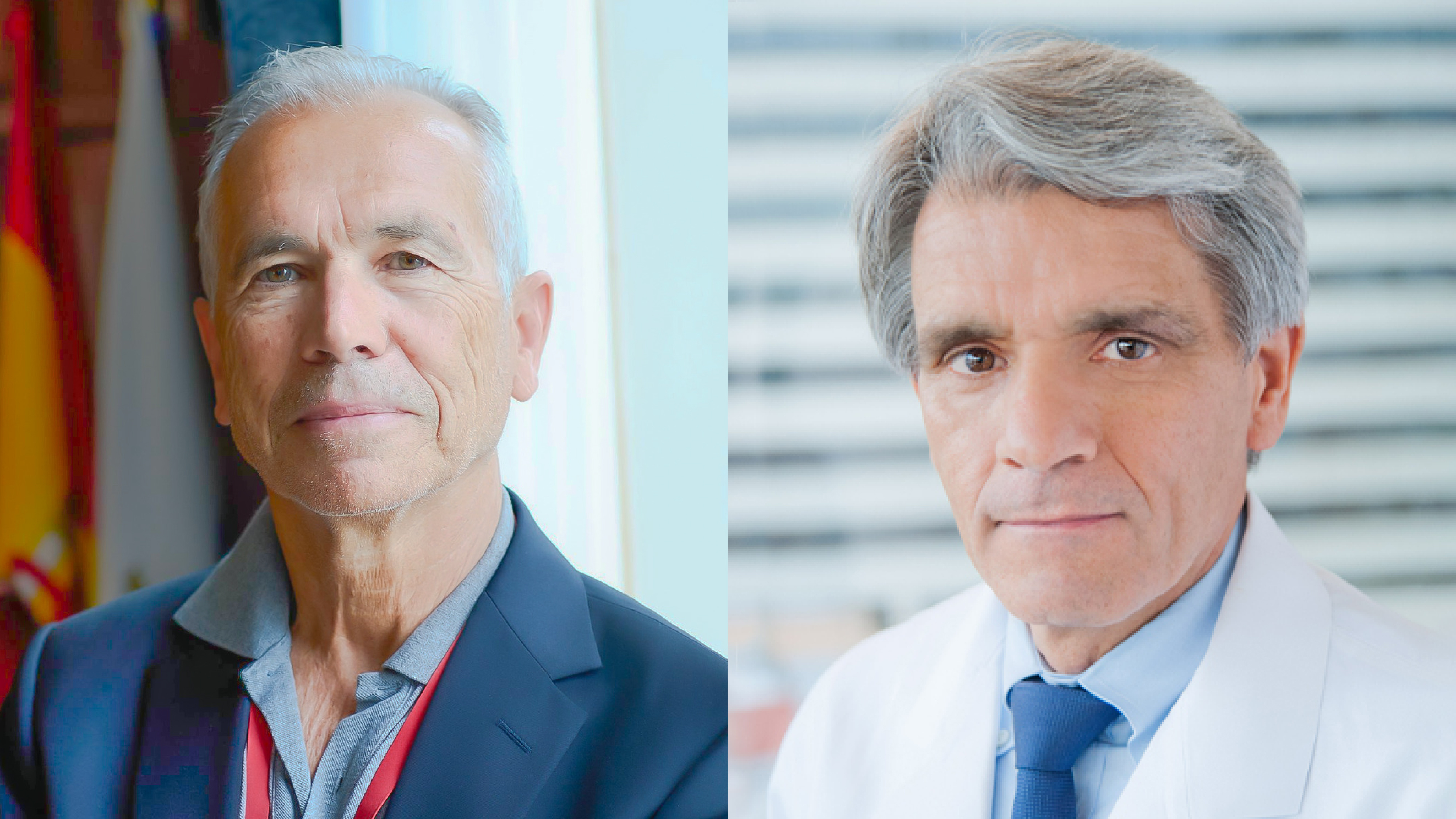$3 million Breakthrough Prize goes to scientists that completely changed our understanding of multiple sclerosis
Two prominent scientists who study multiple sclerosis — Dr. Alberto Ascherio and Dr. Stephen Hauser — are co-winners of a 2025 Breakthrough Prize in Life Sciences.

Two scientists will share a Breakthrough Prize in Life Sciences for research that has revolutionized our understanding of multiple sclerosis.
The two prize winners — Dr. Alberto Ascherio of Harvard and Dr. Stephen Hauser of the University of California, San Francisco (UCSF) — will share $3 million for the award. For comparison, a Nobel Prize comes with 11 million Swedish kronor, a bit over $1 million.
"It's obviously an honor," Ascherio told Live Science of the recognition. He added that he's looking forward to joining the "interdisciplinary forum" of past winners of the prize, who hail from many scientific backgrounds and help decide future winners of the award.
This year's Breakthrough Prize winners will receive their awards at a ceremony in Los Angeles on April 5.
Related: In a 1st, trial finds vitamin D supplements may slow multiple sclerosis. But questions remain.
Rogue immune cells behind MS
The Breakthrough Prizes have been awarded annually since 2013 to recognize accomplishments in fundamental physics, mathematics and the life sciences. One of the three life-science prizes recognizes work in the field of neurodegenerative disorders, and this year, that prize highlighted paradigm-shifting research about multiple sclerosis (MS).
In MS, the immune system attacks fatty tissue that surrounds nerve fibers in the brain and spinal cord. Called myelin, this fatty substance helps neurons send signals efficiently. The destruction of myelin undermines neurons' ability to communicate with one another while also triggering inflammation and scarring in the nervous system.
Sign up for the Live Science daily newsletter now
Get the world’s most fascinating discoveries delivered straight to your inbox.
This leads to symptoms of numbness, weakness, pain, dizziness, slurred speech, coordination problems, and blurred or double vision. Depending on the subtype of MS, a person's symptoms may come and go or steadily worsen over time; some people's disease switches from the former relapsing-remitting pattern to the latter, progressive form of the disease.
Hauser, who directs UCSF's Weill Institute for Neurosciences, helped identify which immune cells actually drive MS.
It was once thought that T cells alone were responsible for the disease. These cells normally rid the body of foreign invaders by killing infected cells, sparking inflammation and summoning other immune defenses to sites of infection. But in MS, it was thought that T cells unleashed inflammation against myelin, damaging the tissue.
Research findings in the 1970s that supported this idea set the stage for MS therapies that took aim at T cells alone. However, this theory of the disease was incomplete. T cells sparked inflammation, but in animal experiments, T cells alone couldn't trigger the type of myelin damage seen in the brains of people with MS.
Hauser's research filled in the missing piece of the puzzle: Another type of immune cell, called a B cell, is also key in MS. Although he and his colleagues faced resistance to their theory, they eventually got clearance to test a B-cell-targeting drug in MS patients, and it worked. That pivotal study paved the way for B-cell-depleting therapies for MS, such as ocrelizumab, which are now a mainstay of treatment.
At the very start of his research, "it would have been impossible to imagine that 35 years later B cells would rest, arguably, at the epicenter of MS immunology," Hauser wrote in a 2015 essay.
Related: $3 million Breakthrough Prize awarded to developers of Ozempic-style drugs
Linking a very common infection to MS
Hauser will share his Breakthrough Prize with Ascherio, a professor of epidemiology and nutrition at Harvard University. Ascherio is being recognized for "revealing that Epstein-Barr virus infection is the leading risk for multiple sclerosis."
Epstein-Barr virus (EBV) causes the common disease infectious mononucleosis, better known as "mono"; over 95% of people catch the EBV virus by adulthood, although not all get the symptoms associated with mono, such as fatigue, fever or swollen lymph nodes. Through a painstaking 20-year study, Ascherio and his colleagues demonstrated that, following an EBV infection, an individual's risk of MS increases 32-fold.
No other risk factors or viral infections are tied to such a stark increase in the risk for the disease. And absolutely no MS cases were seen among people in the study who hadn't caught EBV.
"The fact that the virus is so common makes it difficult to prove," Ascherio said. Difficult, but not impossible — Ascherio mentioned polio as a similar example. The annual rate of symptomatic polio infections in the U.S. peaked in 1952, reaching nearly 58,000 reported cases, and of those, over 21,000 caused paralysis. But many cases of polio go unnoticed; approximately 70% cause no symptoms, while less than 1% of infections lead to paralyzing disease.
"So it's quite common for a virus to be nearly ubiquitous — infect everyone — but cause severe disease, in particular neurological diseases, in only a small minority," Ascherio told Live Science.
Since the publication of Ascherio's 20-year study, "there's been a huge shift" in the field, he said. "Now, EBV has been accepted as a central player and the leading cause of MS."
However, it's not yet known how EBV infection ultimately leads to MS. It's important to note that EBV is a herpesvirus, which means it can lurk in the body, go dormant and reactivate later on. For his part, Ascherio thinks EBV reactivation in the brain is likely important for the development of MS. Figuring out how that mechanism works could help explain why, out of the many people who catch EBV, only a small percentage end up with MS.
But even if that mechanism is unclear, knowing EBV is a key driver of MS points to possible solutions, Ascherio said. For instance, various groups are working on vaccines to prevent EBV infection, with the hope of snuffing out MS down the line.
And in theory, you could come up with something like the shingles vaccine, which works by preventing reactivation of the virus that causes chickenpox; perhaps a similar shot could prevent EBV reactivation in the body, Ascherio suggested.
Disclaimer
This article is for informational purposes only and is not meant to offer medical advice.

Nicoletta Lanese is the health channel editor at Live Science and was previously a news editor and staff writer at the site. She holds a graduate certificate in science communication from UC Santa Cruz and degrees in neuroscience and dance from the University of Florida. Her work has appeared in The Scientist, Science News, the Mercury News, Mongabay and Stanford Medicine Magazine, among other outlets. Based in NYC, she also remains heavily involved in dance and performs in local choreographers' work.
You must confirm your public display name before commenting
Please logout and then login again, you will then be prompted to enter your display name.









